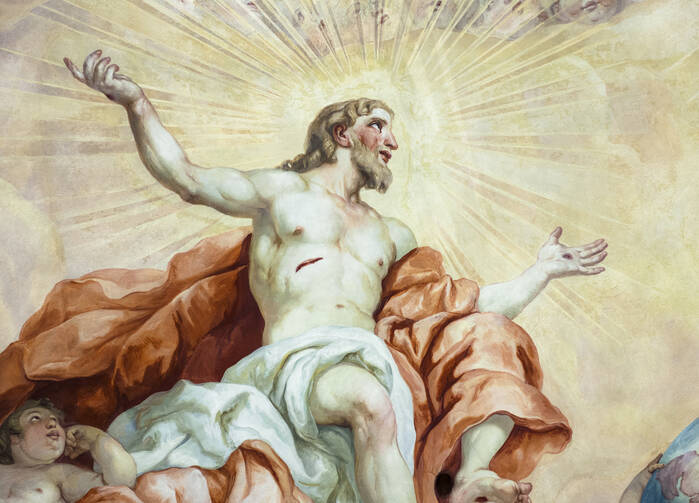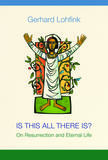What happens when we die?
Gerhard Lohfink, author of the critically acclaimed Jesus of Nazareth: What He Wanted, Who He Was, takes up a new question his latest monograph, Is This All There Is?: “What happens after death?” For Lohfink, there are only two genuine options, either resurrection or inexorable nothingness. After arguing that other proposals—such as the immortality of the soul, survival in descendants, reincarnation or dissolution into the universe—are inadequate, he turns to divine revelation. Lohfink insists “that as regards what happens to us after death we can know nothing except through God’s own self and out of a listening faith.”
Revelation as it came to be articulated in Israel’s Scriptures is the result of reflection and understanding of God’s self-revelation through history: in Israel’s being liberated from slavery, in being formed into a human community marked by brotherly/sisterly support and in being shown divine mercy in times of infidelity. The Old Testament manifests a robust appreciation of “radical worldliness,” of the goodness of God’s creation, and thus is not world denying. It is also characterized by hope that God will establish peace and justice in Israel.
Gerhard Lohfink insists “that as regards what happens to us after death we can know nothing except through God’s own self and out of a listening faith.”
With the coming of Jesus, God’s self-revelation in history reaches its pinnacle. Jesus’ preaching and healing power inaugurated God’s reign, a reign that began with the symbolic gathering of Israel yet is meant for the benefit of the whole world—indeed, of all creation. Lohfink argues that at the heart of Jesus’ revelation of God was his “powerlessness” that led to his death on the cross. Jesus’ revelation of God’s love entailed “absolute non-violence,” the refusal to coerce human freedom. His powerlessness relied entirely on God’s power to save.
The divine power to save is revealed in Jesus’ resurrection, which his followers came to realize was both eschatological (the beginning of the new messianic age) and collective (it pertains to everyone). The physicality of the Risen One shows that, in Lohfink’s words, “what is saved is not a bloodless soul but our whole life-history, our flesh and blood, everything we have been.” The firstborn from the dead, Jesus has ushered in “new creation.” Here we arrive at some of Lohfink’s most crucial claims. Both the unceasing creation (creatio continua) and the new creation of the world in the resurrection are acts of God’s creative love. The resurrection of the dead—along with the transformation of the world—is the goal of all history. And this fulfillment already has a beginning in Jesus’ resurrection.
A major concern for Lohfink is that “[t]he church can no longer afford to uncritically offer naïve ideas about time when talking about the ‘last things.’”
With these building blocks in place, Lohfink sets forth a series of series of statements about “resurrection in death.” In death, one encounters the living God—more precisely, God in the risen Christ, in whose face we see God. This encounter is also an encounter with truth, including the truth about ourselves: “We will know who we are. We ourselves will judge and condemn the evil in ourselves.” But judgment is also an encounter with divine mercy. While God cannot and does not ignore injustice and evil, God’s justice is ultimately expressed in mercy. The encounter with God thus not only clarifies; it also purifies and transforms, because only holiness is fitting before God.
A major concern for Lohfink is that “[t]he church can no longer afford to uncritically offer naïve ideas about time when talking about the ‘last things.’” While most Christians no longer regard heaven in spatial terms, they typically apply earthly time to eschatological events, such as the parousia, the return of Christ in glory at the end of time. After two thousand years, the parousia as expected by the first Christians (1 Thes 4:13-18) still has not happened. Lohfink counters that with death the so-called end of the world occurs for the dying; so too is experienced the return of Christ, the resurrection and the judgment of the world.
Readers will find Is This All There Is? both engaging and challenging. Lohfink wrestles with perennial questions including how to talk about: God’s justice/wrath and mercy; God’s desire that everyone be saved (cf. 1 Tim 2:4) while hell remains a “fearful possibility”; and what genuine care for the dead should look like. As a New Testament scholar, I greatly appreciated his exegetical analyses, especially his interpretation of the imagery found in Revelation 21-22. Many readers, however, will be left wanting to hear more about how Lohfink would engage in dialogue with those who do not share his Christian beliefs.
This article also appeared in print, under the headline “What happens after death? ,” in the February 19, 2018, issue.











